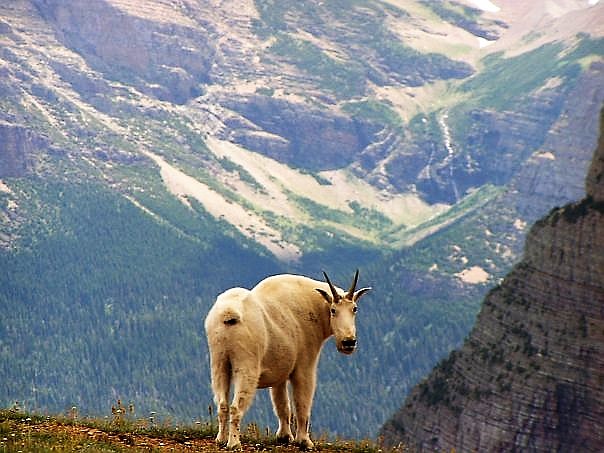Students study glaciers up close during trip to Glacier
Kathleen Woodford Mineral Independent | Hagadone News Network | UPDATED 8 years, 2 months AGO
Superior geology students were able to see with their own eyes the glacially carved features of Glacier National Park and learned about long, deep lakes like Lake McDonald and Bowman.
Beau Servo who is in his second year of teaching Earth Science at Superior High School took 16 eager freshman to the park on Oct. 12 and 13. Once there the students were able to see the glaciers and rock formations they had previously only seen in text books.
“It’s so much better than worksheets in the classroom,” said Servo who has taught outdoor education in the past. He is from the Kalispell area and is familiar with the natural beauty and unique geological treasures Montana national parks have to offer.
Things like U-shaped valleys scoured out by glaciers freezing and re-freezing over thousands of years. Forming lakes, broad base bowls and sheer mountain sides that make the characteristics of the park a fascinating place to visit for thousands of tourists every year. In fact, Glacier Park boasted more than 1 million visitors in July 2017, setting a record for one month’s attendance, up 23 percent from July 2016.
The class was offered through the Big Creek Outdoor Education Center where students spent the night. First they went to the Hungry Horse Dam, then made their way to Lake McDonald and took a hike on the Huckleberry Nature Trail.
Unfortunately the weather had turned cold and there was snow during their field trip but students still enjoyed learning about the glaciers and other rock formations that make this park so special. Some of the features learned about the glaciers are aretes and horns. Saw-toothed aretes, like the Garden Wall, mark places where two glaciers carved on each side of a ridge. Craggy horns are mountain tops that were scraped vertical by glaciers on three or more sides like Flinsch Peak, Reynolds Mountain and the Little Matterhorn.
The Big Creek Center began in 1927 as a Forest Service Ranger Station and the Glacier Institute was established in 1988. It’s located on the North Fork of the Flathead River just 20 minutes from West Glacier and offers hiking, biking, bird and wildlife watching. In addition to geology the center offers curriculum-based studies in aquatics, ecology, fire ecology and forestry.
Next spring Servo would like to take students to Yellowstone National Park to see the volcanic activity among the many geysers, hot springs, and mudpots that make it a world attraction.
ARTICLES BY KATHLEEN WOODFORD MINERAL INDEPENDENT
Mineral County sends tax bill to Forest Service
The Forest Service will be receiving a property tax bill from Mineral County this year. County Commissioners Laurie Johnston, Roman Zylawy and Duane Simons signed the letter March 9 requesting property tax revenue for 2017. The “historic letter” as defined by Rep. Denley Loge, describes the plight Mineral County is facing as options to fund the county have dried up.
Colorado woman dies after vehicle gets stuck
An early evening call received by Mineral County dispatch on Friday, March 17, ended in tragedy. The body of Colorado resident Debra Ann Koziel was found in the Fish Creek area by a search team the following Tuesday afternoon. Her death was determined to be the result of exposure to weather.

No major flooding as snow thaws
“As the ground starts thawing, the rocks start falling,” was a post made on the Mineral County Sheriff’s Office’s Facebook page last week. A photo accompanied the post of a big rock which had come down on Mullan Road East near the Big Eddy fishing access in Superior on March 11. “Please be aware of your surroundings and pay attention while driving,” they warned in the post.

